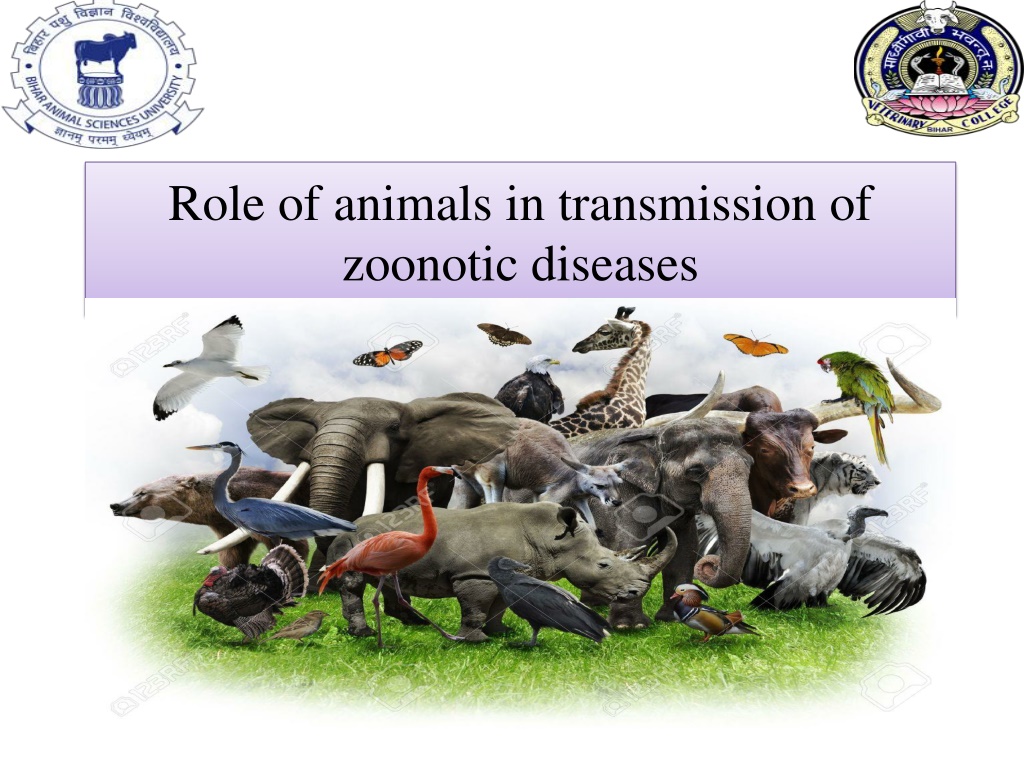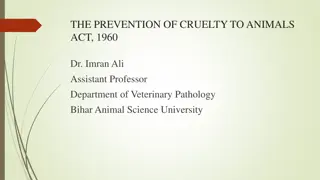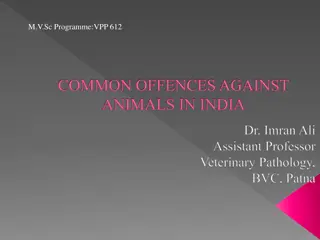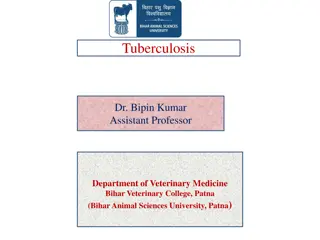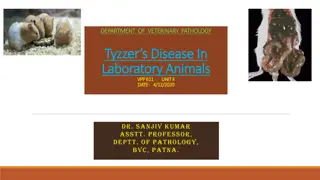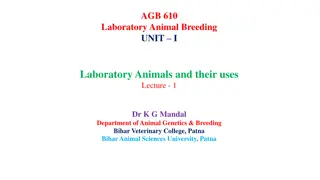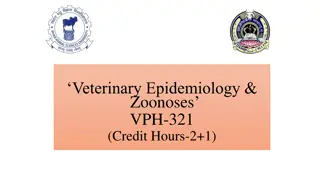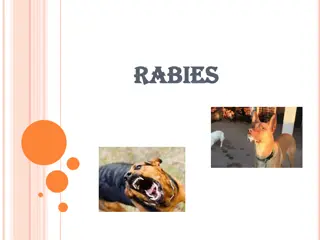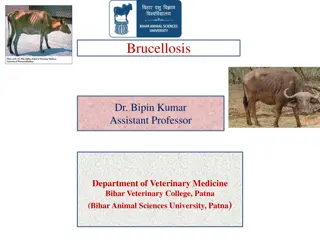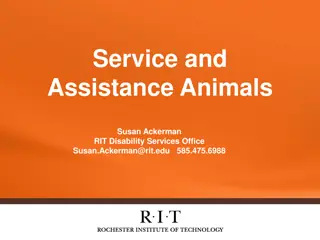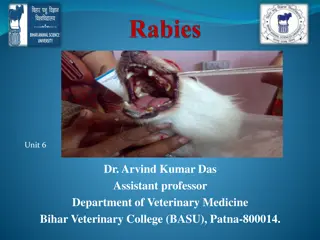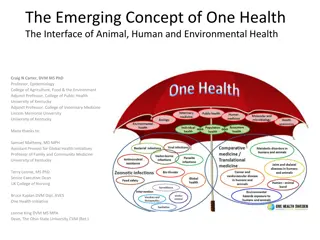Role of animals in transmission of Zoonotic Disease
Animals, both domestic and wild, play a significant role in the transmission of zoonotic diseases to humans. Domestic animals like dogs, cats, cattle, and poultry can spread diseases such as rabies, toxoplasmosis, and avian influenza. Wild animals, on the other hand, harbor a range of microorganisms that can be transmitted to humans through various means. Understanding the interactions between humans and animals is crucial in preventing the spread of zoonotic diseases.
Download Presentation

Please find below an Image/Link to download the presentation.
The content on the website is provided AS IS for your information and personal use only. It may not be sold, licensed, or shared on other websites without obtaining consent from the author. Download presentation by click this link. If you encounter any issues during the download, it is possible that the publisher has removed the file from their server.
E N D
Presentation Transcript
Role of animals in transmission of zoonotic diseases
Domestic Animals A number of as pets, which besides providing companionship, serve utilitarian purposes protecting homes and property, destroying vermin and providing means of transport Domestic/ companion animals Examples of zoonoses Dogs Hydatidosis, Visceral larva migrans (VLM), Cutaneous larva migrans (CLM), Rabies, Leptospirosis Cats Rabies, Toxoplasmosis, Cat scratch disease Birds Psittacosis/ Ornithosis Ornamental fishes Erysipelas Equines Eastern equine encephalitis (EEE), Western equine encephalitis (WEE), Venezuelan equine encephalitis (VEE), Glanders, Hendra
Cattle Foot and mouth disease (FMD), Rabies, Cow pox, Milker s nodules, Bovine spongiform encephalopathy (Creutzfeldt-Jacob disease), Brucellosis, Leptospirosis, Campylobacteriosis,Anthrax Sheep Q-fever, Leptospirosis, Listeriosis, Brucellosis,Anthrax Goats Orf, Brucellosis, Leptospirosis, Anthrax Pigs Trichinosis, Erysipelosis, Salmonellosis, Anthrax, Swine influenza, Japanese encephalitis Poultry Avian Listeriosis, Mycobacterium avium, Toxoplasmosis influenza, Newcastle disease virus conjunctivitis,
Domiciliated animals These are animals which live in close contact with human dwellings Maintenance of such animals Increase in human population, Inadequate sanitary measures, Easy access to garbage dumps & food materials etc Animal Disease Rats, Mice, bandicoots, badger etc. TB, Leptospirosis, rat bite fever, Hantan fever, Plague, Murine typhus Tularemia,
Wild Animals Wild animals are the known host to a wide range of microorganisms Alteration in ecology i.e. intrusion of human in forest area lead to emergence Animals Diseases Monkeys KFD , yellow fever in humans, tick typhus, CCHF, Q- fever, tularemia Migratory birds Avian influenza, West Nile virus, EEE, WEE Skunks, ferrets, bats, foxes, wild dogs and cats Rabies Hare: Brucellosis, Yersiniosis, Tularemia, Listeriosis, Leptospirosis Bison TB and Brucellosis Wood mouse Yersiniosis Badgers TB
Cold-blooded animals Fishes, lizards, snakes, toads, turtles and frogs: Fishes: Erysipelothrix insidiosa, Clostridium botulinum type E, C. septicum, C. sporogenes and C. perfringens, Listeria monocytogenes Vibrio parahaemolyticus Snakes and tortoises: Salmonellae & Aeromonas Lizards: Tularemia, Brucellosis and Leishmaniasis
